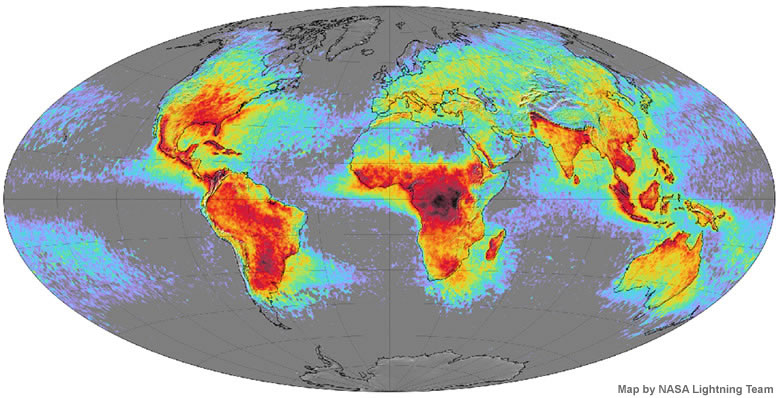1. Alvin Tran
(with Wendy Xu & Katie)
2. Rhea Dillon
3. Fette Sans
4. Verónica Gerber Bicecci
5. Dawn Chan
6. Young-Hae Chang Heavy Industries
7. Quinn Latimer
8. Kosisochukwu Nnebe
9. Sheena Patel
10. Priya Jay
11. Caitlin Chaisson & Denis Gutiérrez-Ogrinc
12. Miles Greenberg & Viðar Logi
CONTACT

Cloud
to Cloud
by
Verónica Gerber Bicecci
and Christina MacSweeney
October 13
Verónica
Hoy pregunté en Twitter: “¿Por qué será que los relámpagos y las raíces se parecen tanto?” Recibí varias respuestas. Atesoro, particularmente, la de @loin_du_roi: “Unos y otras se agarran a lo oscuro para iluminar el mundo”.
Y @alanspage me dijo: “Ambos están buscando”. Yo solo agregaría que las raíces y los relámpagos, en esa búsqueda, “hacen tierra”, como dicen los electricistas. Today I asked a question on Twitter: “Why are lightning and roots so similar?” I received several answers, but I particularly treasure this one by @loin_du_roi: “They both cling to darkness to illuminate the world.”
And @alanspage said: “They are both searching.” I’d just add that, in their searches, roots and lightning are “earthing,” as electricians say.
Y @alanspage me dijo: “Ambos están buscando”. Yo solo agregaría que las raíces y los relámpagos, en esa búsqueda, “hacen tierra”, como dicen los electricistas. Today I asked a question on Twitter: “Why are lightning and roots so similar?” I received several answers, but I particularly treasure this one by @loin_du_roi: “They both cling to darkness to illuminate the world.”
And @alanspage said: “They are both searching.” I’d just add that, in their searches, roots and lightning are “earthing,” as electricians say.
October 14
Christina
I wonder where that desire for lightning to earth comes from. What is its root?
Me pregunto de dónde viene ese deseo de hacer tierra. ¿Cuál es su origen?
October 15
Verónica
También las venas del cuerpo, los ríos, las nervaduras de las hojas, las ramas de los árboles, las grietas y las fisuras se parecen.
The veins in our bodies and in leaves, rivers, the branches of trees, cracks, and fissures are alike too.
Christina
I’ve been thinking about the different kinds of lightning and the words associated with it; the most common type is “cloud-to-ground” and when it resembles a root system, it’s described as “forked.” The etymology of this usage seems to be related to a forked snake’s tongue, as though lightning were somehow lying. This led me to think of that hackneyed term applied to translation: “Traduttore, traditore,” translator, betrayer. As they pass between languages, do the voices I create in translation become forked voices? Lightning voices?
He estado pensando en los diferentes tipos de relámpagos y en las palabras asociadas con ellos; los más comunes son los “rayos de nube a tierra”, que recuerdan a un sistema radicular y se describen como “bifurcados”. La etimología de este uso se relaciona con la lengua bífida de las serpientes, como si los relámpagos estuvieran, de alguna forma, mintiendo. Esto me llevó a pensar en esa trilladísima idea sobre la traducción: “Traduttore, traditore”, traductor, traidor. Conforme se atraviesan entre idiomas, ¿las voces que creo en una traducción se convierten en voces bifurcadas? ¿En voces relámpagos?
October 16
Verónica
Voces en tenedor y sus copias, tal vez. Ahora pienso en las mentiras también como copias tergiversadas. Justo ayer, en la presentación de un libro que se pregunta por la idea de originalidad en la escritura pensaba que el mecanismo de empatía cuando leemos se produce a partir de la copia. Si en el fondo todo es una copia, nos sentimos identificados porque hay algo que también es nuestro en lo que se repite. Y te cuento esto porque creo que la traducción o el dibujo, la escritura, son también formas sofisticadas de la copia. Lo que no sé es cómo entenderán la copia los relámpagos.
En su libro Sobre el dibujo, John Berger dice que “dibujar es descubrir”. Y me gusta esa idea: dibujar para desentrañar un misterio. El dibujo es para mí (además de otra forma de la copia) una herramienta de investigación. O, en otras palabras, una herramienta de lectura. Te dejo por aquí el dibujo de un sistema radicular (con una raíz principal) y un relámpago, a ver si algo se nos revela: Forked voices and their copies perhaps. Now I’m thinking that lies are also warped copies. Yesterday, at the launch of a book that questions the notion of originality in writing, I thought that the empathy mechanism that occurs when we’re reading is based on copying. If everything is fundamentally a copy, we identify with it because there’s something that is ours in what is repeated. I’m telling you this because I believe translation or drawing, writing, are also sophisticated forms of the copy. What I don’t know is how lightning understands the copy.
In his book On Drawing, John Berger says that “drawing is discovery.” I like that idea: drawing as unraveling a mystery. For me, drawing (in addition to being a form of copy) is a research tool. Or, in other words, a reading tool. I’m adding drawings of a root system (with the primary root) and a lightning bolt to see if they reveal anything to us.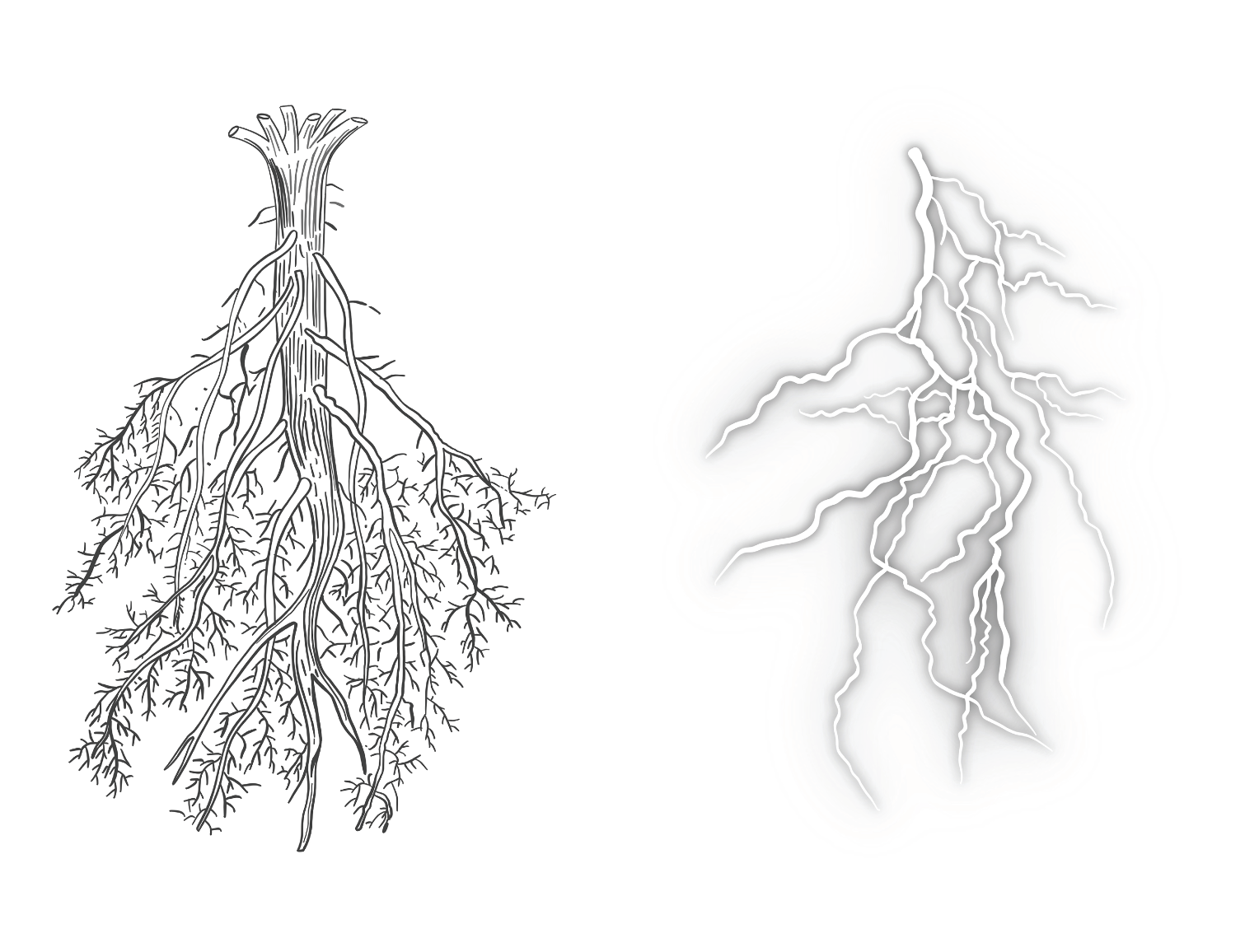
En su libro Sobre el dibujo, John Berger dice que “dibujar es descubrir”. Y me gusta esa idea: dibujar para desentrañar un misterio. El dibujo es para mí (además de otra forma de la copia) una herramienta de investigación. O, en otras palabras, una herramienta de lectura. Te dejo por aquí el dibujo de un sistema radicular (con una raíz principal) y un relámpago, a ver si algo se nos revela: Forked voices and their copies perhaps. Now I’m thinking that lies are also warped copies. Yesterday, at the launch of a book that questions the notion of originality in writing, I thought that the empathy mechanism that occurs when we’re reading is based on copying. If everything is fundamentally a copy, we identify with it because there’s something that is ours in what is repeated. I’m telling you this because I believe translation or drawing, writing, are also sophisticated forms of the copy. What I don’t know is how lightning understands the copy.
In his book On Drawing, John Berger says that “drawing is discovery.” I like that idea: drawing as unraveling a mystery. For me, drawing (in addition to being a form of copy) is a research tool. Or, in other words, a reading tool. I’m adding drawings of a root system (with the primary root) and a lightning bolt to see if they reveal anything to us.

Christina
Yes, that distinction between copy and original is deeply rooted in Western (masculine) modernism, whereas your drawing suggests something in a process of development.
Curiously, in English, as a noun, “copy” can mean a single example of a book or a text to be set for printing.
I love that Berger quote. For me collage has been a tool I’ve used to understand my world, to read it in images. Sí, esa distinción entre original y copia está profundamente arraigada en el modernismo occidental (masculino), mientras que tu dibujo sugiere algo en proceso de desarrollo.
Curiosamente, en inglés, el sustantivo “copia” puede significar un solo ejemplar de un libro o un texto que se prepara para impresión.
Me encanta esa cita de Berger. Para mí el collage ha sido una herramienta para entender el mundo, para leerlo en imágenes.
Curiously, in English, as a noun, “copy” can mean a single example of a book or a text to be set for printing.
I love that Berger quote. For me collage has been a tool I’ve used to understand my world, to read it in images. Sí, esa distinción entre original y copia está profundamente arraigada en el modernismo occidental (masculino), mientras que tu dibujo sugiere algo en proceso de desarrollo.
Curiosamente, en inglés, el sustantivo “copia” puede significar un solo ejemplar de un libro o un texto que se prepara para impresión.
Me encanta esa cita de Berger. Para mí el collage ha sido una herramienta para entender el mundo, para leerlo en imágenes.
October 17
Verónica
¡Abajo la distinción entre original y copia entonces!
Me quedé pensando en los dibujos que te envié. Ahora creo que intentan mostrar diferencias: la raíz es opaca y el relámpago es más bien fantasmagórico. La idea de copia se ha asociado muchas veces con la de fantasma. ¿Los rayos podrían ser fantasmas de las raíces, las venas, los ríos y las nervaduras?
¡No sabía que hacías collage! Me gusta cómo el collage reordena el mundo y rompe con las reglas establecidas de la representación. Además, se construye de recortes que casi siempre son una copia de algo, una re-produción. Down with the distinction between the original and copy then!
I’ve been thinking about the drawings I sent you. Now it seems to me that they are trying to show differences: the root is opaque while the lightning is somehow phantasmagorical. The idea of the copy has often been associated with the phantasmal. Could lightning bolts be the ghosts of roots, veins, rivers, and nerves?
I didn’t know that you made collages! I like the way collage reorders the world and breaks established rules of representation. And then they are made up of clippings that are almost always a copy of something, a re-production.
Me quedé pensando en los dibujos que te envié. Ahora creo que intentan mostrar diferencias: la raíz es opaca y el relámpago es más bien fantasmagórico. La idea de copia se ha asociado muchas veces con la de fantasma. ¿Los rayos podrían ser fantasmas de las raíces, las venas, los ríos y las nervaduras?
¡No sabía que hacías collage! Me gusta cómo el collage reordena el mundo y rompe con las reglas establecidas de la representación. Además, se construye de recortes que casi siempre son una copia de algo, una re-produción. Down with the distinction between the original and copy then!
I’ve been thinking about the drawings I sent you. Now it seems to me that they are trying to show differences: the root is opaque while the lightning is somehow phantasmagorical. The idea of the copy has often been associated with the phantasmal. Could lightning bolts be the ghosts of roots, veins, rivers, and nerves?
I didn’t know that you made collages! I like the way collage reorders the world and breaks established rules of representation. And then they are made up of clippings that are almost always a copy of something, a re-production.
Christina
And when we find ourselves outside the comfort zones of our everyday world, we need to break rules, shuffle things around to be able to see what surrounds us.
Here’s a detail from one of my collages: Y cuando estamos fuera de las zonas de confort de nuestro mundo cotidiano, necesitamos romper las reglas, mezclar y reorganizar las cosas para ver qué es lo que nos rodea.
Aquí un detalle de uno de mis collages: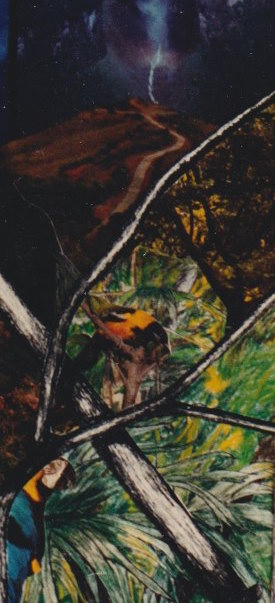
Here’s a detail from one of my collages: Y cuando estamos fuera de las zonas de confort de nuestro mundo cotidiano, necesitamos romper las reglas, mezclar y reorganizar las cosas para ver qué es lo que nos rodea.
Aquí un detalle de uno de mis collages:

October 18
Verónica
Justo quería pedirte que me enviaras uno de tus collages, qué bueno que te adelantaste. Otra cosa que me gusta de los collages: las perspectivas cambian y caben muchos mundos; las historias se cuentan de otra manera.
I was just going to ask you to send me one of your collages. Great that you beat me to it. Another thing I like about collage: the perspectives change and many worlds can coexist there; the stories are told in a different way.
Me quedé pensando: si toda copia tiene algo de fantasma, entonces los relámpagos, por su afantasmamiento, también tienen algo de copias. ¿No será que los relámpagos son replicantes? ¿O algún tipo de fotocopiadora celeste? ¿Y, de ser así, a dónde será que irán a dar las copias que hacen?
I’ve been thinking: if there is something phantasmagorical about copies, then—due to its “phantise-ment”—there must be aspects of the copy it shares with lightning. Is lightning a replicant? Or some sort of celestial photocopier? And if that’s true, where do the copies made end up?
Christina
I’m tempted to say that like all photocopies, they end up in the shredder! And then go for recycling.
Estoy tentada a decirte que, como todas las fotocopias, ¡terminan en la trituradora de papel! Y luego se reciclan.
October 19
Verónica
Encontré esta animación en internet. Es un río. Un río relampagueante:
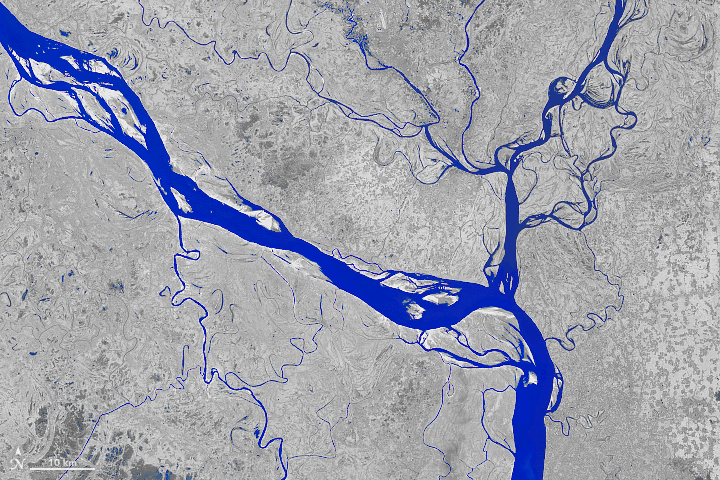 I found this animation on the internet. It’s a lightning river:
I found this animation on the internet. It’s a lightning river:

 I found this animation on the internet. It’s a lightning river:
I found this animation on the internet. It’s a lightning river:

(https://earthobservatory.nasa.gov/images/92529/the-most-erosive-area-on-the-padma)
Christina
That animation makes me think of “cloud-to-cloud” lightning, where the flashes don’t touch the earth.
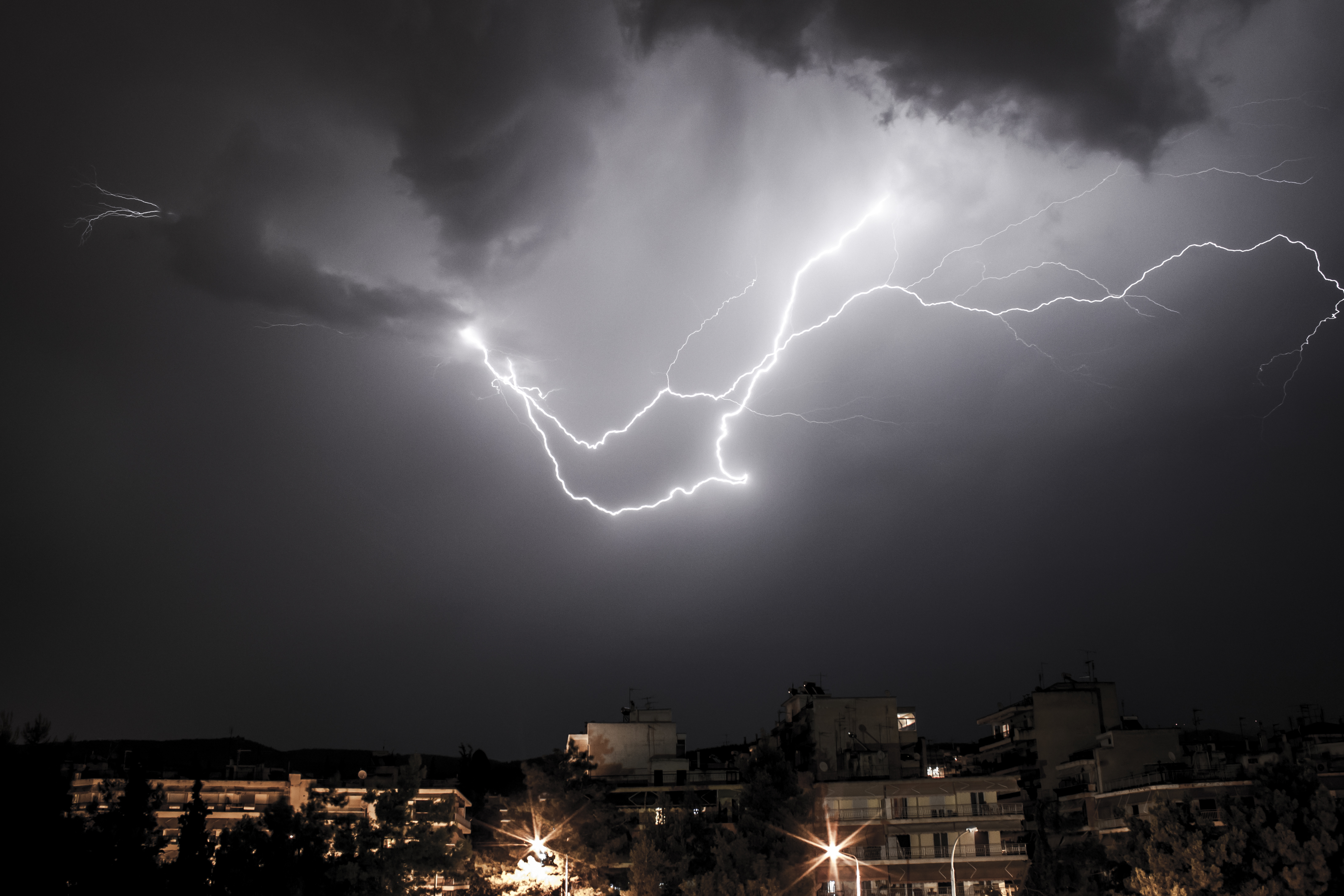
And those images also remind me of the mycelia of fungi, which form connections between tree roots underground, in some way acting as the trees’ messengers, their postal service. Maybe transmitting their love letters. Esa animación me hace pensar en los “rayos de nube a nube”, en los que los destellos no tocan el suelo.
Y todas estas imágenes también me recuerdan al micelio de los hongos, que forma conexiones bajo tierra, entre las raíces de los árboles. En cierta forma, los hongos y su micelio son mensajeros, y actúan como un servicio postal. Tal vez transmiten sus cartas de amor.

Royal Meteorological Society (https://www.rmets.org/metmatters/types-lightning#:~:text=Cloud%2Dto%2DCloud%20(CC,lightning%20within%20a%20single%20cloud))
And those images also remind me of the mycelia of fungi, which form connections between tree roots underground, in some way acting as the trees’ messengers, their postal service. Maybe transmitting their love letters. Esa animación me hace pensar en los “rayos de nube a nube”, en los que los destellos no tocan el suelo.

Real Sociedad Meteorológica (https://www.rmets.org/metmatters/types-lightning#:~:text=Cloud%2Dto%2DCloud%20(CC,lightning%20within%20a%20single%20cloud))
Y todas estas imágenes también me recuerdan al micelio de los hongos, que forma conexiones bajo tierra, entre las raíces de los árboles. En cierta forma, los hongos y su micelio son mensajeros, y actúan como un servicio postal. Tal vez transmiten sus cartas de amor.
October 20
Verónica
¡Los relámpagos y el micelio!, cierto. ¿Serían algo así como el servicio postal de la luz?, ¿las cartas de amor entre el cielo y la tierra?
Yes. Lightning and mycelia! So are they kind of like the postal service of light? Love letters between the sky and the earth?
October 21
Verónica
Dibujar también se parece a escribir una carta de amor.
Drawing is also like writing a love letter.
Christina
Translation is writing a love letter.
Traducir es escribir una carta de amor.
October 23
Verónica
Cuando pregunté en Twitter por qué se parecen tanto los relámpagos y las raíces (y creo que también podemos extenderlo al micelio, como decías), @yamiruizam me dijo que ella piensa que son “caligrafías” de la naturaleza. Creo que tiene razón. La cuestión sería, para mí, lograr entender si los rayos provienen de la misma familia lingüística, si son varias lenguas con elementos en común o si son una misma lengua. ¿Qué diablos le dicen las nubes a los pararrayos, a los árboles, a otras nubes, a la tierra? Me encantaría descifrarlas.
When I asked on Twitter why lightning and roots are so similar (and I think, as you say, we can extend that to mycelia), @yamiruizam said that she thinks they are nature’s “handwriting.” She could well be right. What I want to know is whether lightning comes from the same language family, if it is composed of many languages with common elements, or is just one. What the hell are the clouds saying to lightning rods, trees, other clouds, the earth? I’d love to be able to decipher them.
October 25
Christina
When you talk about deciphering the letters, have you considered that they might not be intended for us? That we are trying to read private correspondence. There’s a guilty pleasure to be found in that.
Cuando dices que quieres descifrar las cartas, ¿has considerado que tal vez no están dirigidas a nosotras y que estaríamos intentando leer correspondencia privada? Eso me produce un placer culpable.
Verónica
Definitivamente. Sufro mal de archivo, jaja. Aunque, por otro lado, su espectáculo es tan visible y pirotécnico que parece que nos hablan, o al menos nos hacen saber de la existencia de su correspondencia y que no tenemos acceso a ella.
Too true. I’m suffering from archive fever! Ha ha. Though, on the other hand, the spectacle is so visible and pyrotechnic that it seems to be speaking to us, or at least making us aware of the existence of a correspondence to which we don’t have access.
October 26
Christina
Maybe it’s something like Poe’s “The Purloined Letter.” Hiding something in plain view.
Tal vez sea como eso que dice Poe en “La carta robada”. Se esconde a plena luz.
October 28
Verónica
Un código morse de las nubes.
A Morse code of the clouds.
October 29
Christina
I’ve always thought there was something missing from Michelangelo’s image. Could it be lightning?
Siempre he pensado que falta algo en este fragmento de Miguel Ángel. ¿Podría ser un relámpago?


October 31
Verónica
Los últimos días hay rayos y truenos. Los veo a través de la ventana, desde la oscuridad de mi cuarto, antes de dormir. Pero se supone que ya no es temporada de lluvias en la Ciudad de México. Lo que falta en el detalle de Miguel Ángel parece que sobra acá.
We’ve had thunder and lightning over the last few days. I watch from the window, in the darkness of my bedroom before going to sleep.But it isn’t supposed to be the rainy season in Mexico City. Here, we seem to have too much of what’s missing in the detail of the Michelangelo image.
November 2
Christina
What happens to lightning when it hits the ground? Does it become the mirror image of its fork and converge on some point in the subsoil?
¿Qué le pasa al relámpago cuando toca el suelo? ¿Se convierte en una imagen especular de su ramificación y luego converge en algún punto del subsuelo?
November 3
Verónica
En mi Twitter @anamariett dijo: “Yo diría que los relámpagos son las raíces de arriba mientras que éstas son los relámpagos para las criaturas de más abajo”. Creo que respondió a tu pregunta sin saberlo.
On my Twitter thread, @anamariett said: “For me, lightning is overground roots while roots are lightning for the creatures living below ground.” I think @anamariett unconsciously replied to your question.
November 5
Christina
Yes, that’s a great answer.
Sí, qué gran respuesta.
November 10
Verónica
Me gusta cuando hay relámpagos pero no llueve (o llueve en otra parte).
I like it when there’s lightning but no rain (or it’s raining somewhere else).
November 11
Christina
We had one of those lightning storms without rain here a few weeks back. Wonderful flashes of white light across our wide Norfolk skies. I sat watching and counting the seconds until the thunder sounded, judging how far away the storm clouds were. At some point the two events were almost simultaneous: storm directly overhead.
Tuvimos una de esas tormentas eléctricas sin lluvia hace unas semanas. Fantásticos destellos de luz blanca en los anchos cielos de Norfolk. Me senté a mirar y a contar segundos hasta que sonara cada trueno, juzgando qué tan lejos de mí estaban las nubes de la tormenta. En algún punto eran casi simultáneos: la tormenta directamente sobre mi cabeza.
November 17
Verónica
Contar los segundos, me gusta. Lo intentaré durante la próxima tormenta. Acá anoche llovió bastante, pero no vi relámpagos. La lluvia se siente completamente fuera de lugar en noviembre. Y hace calor. El calor en noviembre también se siente fuera de lugar. Creo que estamos fuera de lugar.
I like the idea of counting seconds. I’ll try it the next time we have a storm. Last night, it rained heavily here, but I didn’t see any lightning. Rain feels completely out of place in November. Plus, its hot. And heat in November feels out of place too. I feel like we’re out of place.
November 18
Christina
And the elements are trying to tell us just that. Are we listening?
Y los factores climáticos están tratando de decirnos justo eso. ¿Estamos escuchando?
Verónica
Creo que no estamos escuchando. Pero tal vez buscar indicios sea una forma de escuchar. Acá una pintura de cuando el relámpago ya no está, pero dejó su rastro:
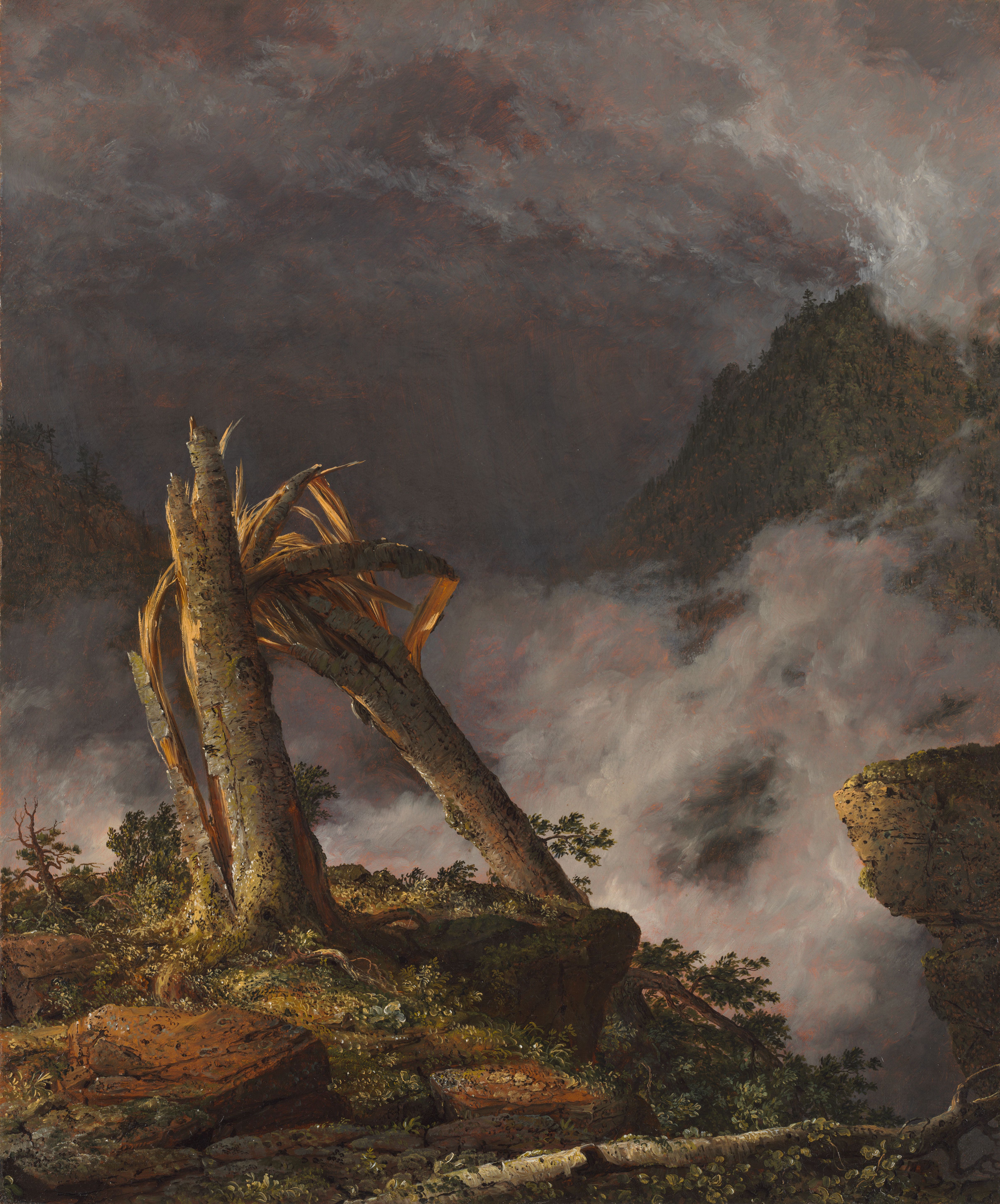
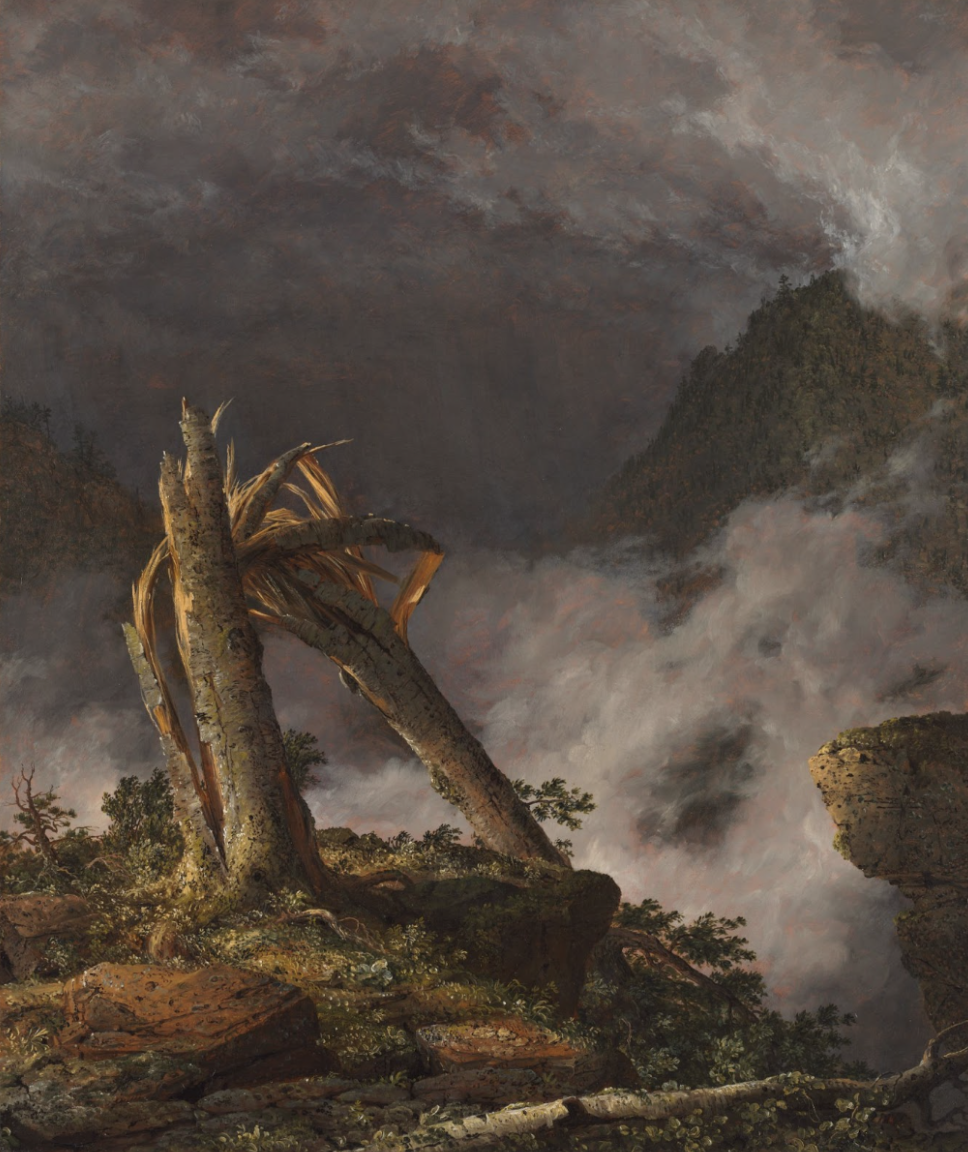

Frederic Edwin Church, Tormenta en las montañas, 1847
I don’t think so. But looking for signs could be a way of listening. Here’s a painting of when a lightning bolt has disappeared, but has left a sign.
Frederic Edwin Church, Storm in the Mountains, 1847
November 19
Christina
That’s such a dramatic image. Maybe the reason I love lightning is that very drama. But how strange that something so simple, so beautiful, can leave in its wake such devastating images.
Es una imagen muy dramática. Tal vez la razón por la que me gustan los relámpagos es ese mismo drama. Pero es raro que algo tan simple, tan bello, pueda dejar a su paso imágenes tan devastadoras.
November 20
Verónica
El otro día, en sus redes sociales, Vivian Abenshushan contó que se secó todo un ramal de un enorme ficus que hay en su casa en Tepoztlán. Dice que le dijeron que tal vez le cayó un rayo. Y se pregunta: “¿Será?” Me sorprendió la coincidencia con nuestra correspondencia y la pintura que te envié.
The other day, on social media, Vivian Abenshushan said that a whole branch of a huge ficus tree in the garden of her house in Tepoztlán withered. She says she’s been told it might have been hit by lightning. And she wondered if that could be true. I was surprised by the coincidence with our correspondence and the painting I sent you.
November 21
Christina
In Malcolm Lowry’s novel, Under the Volcano, lightning plays a starring role. He describes it as flickering, twitching, blazing white and jagged, “as if a heliograph were stammering messages across the wild landscape.” But my favorite is when the lightning “flashed like an inchworm.” Here’s an inchworm
lightning storm:

P.S. It’s better without the sound. En la novela Bajo el volcán de Malcolm Lowry, los relámpagos tienen un papel protagónico. Él los describe como parpadeantes, espasmódicos, de un blanco resplandeciente y dentados, “como si un heliógrafo de relámpagos tartamudease mensajes a través del montaraz paisaje”. Pero mi parte favorita es cuando “el relámpago brilló como una oruga”. Aquí te dejo una tormenta de relámpagos oruga:
P.D. Es mejor sin sonido.

You can see the whole video on: (https://www.youtube.com/watch?v=cyasgr9mn3s)
P.S. It’s better without the sound. En la novela Bajo el volcán de Malcolm Lowry, los relámpagos tienen un papel protagónico. Él los describe como parpadeantes, espasmódicos, de un blanco resplandeciente y dentados, “como si un heliógrafo de relámpagos tartamudease mensajes a través del montaraz paisaje”. Pero mi parte favorita es cuando “el relámpago brilló como una oruga”. Aquí te dejo una tormenta de relámpagos oruga:

Puedes ver el video completo en: (https://www.youtube.com/watch?v=cyasgr9mn3s)
P.D. Es mejor sin sonido.
November 22
Verónica
Traduje a dibujo algunos fragmentos de la tormenta de relámpagos oruga para ver su secuencia:
I translated some fragments of the inchworm lightning storm into drawing to see what sequences it produces:
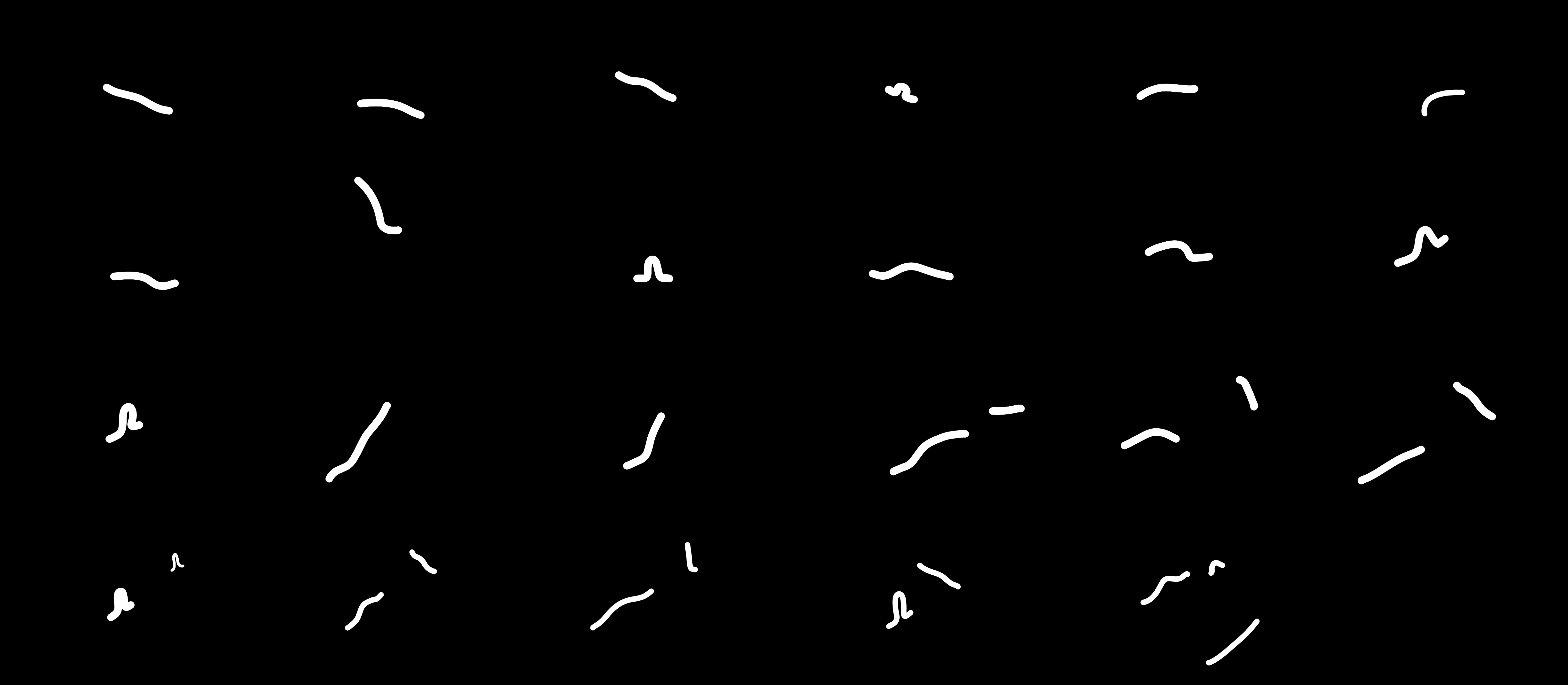

November 23
Christina
A perfect enigma code!
¡Un código enigma perfecto!
November 26
Christina
Thinking about Lowry’s Under the Volcano, which is set in Cuernavaca on the Day of the Dead, also brought to mind Mary Shelley’s novel, where Frankenstein uses lightning to animate his creation. It is, therefore, the bringer of both life and death.
Pensar en Bajo el volcán de Lowry –que sucede en Cuernavaca el Día de Muertos– me recordó, a su vez, a la novela de Mary Shelley, en la que Frankenstein usa relámpagos para animar su creación. El relámpago es, por consiguiente, portador tanto de vida como de muerte.
November 27
Verónica
Regresé a mis subrayados de Frankenstein. Encontré esta escena que Víctor Frankenstein presenció cuando tenía quince años: “Los truenos estallaban unos tras otros con un
aterrador estruendo en los cuatro puntos cardinales del cielo [...] observé un rayo de fuego que se levantaba desde un viejo y precioso roble que se encontraba a unas veinte yardas de nuestra casa [...] a la mañana siguiente, cuando fuimos a verlo, nos encontramos el árbol increíblemente carbonizado; no se había rajado por el impacto, sino que había quedado reducido por completo a astillas de madera. Nunca vi una cosa tan destrozada. La catástrofe del árbol me dejó absolutamente asombrado”.
Me reconozco en su fascinación. La descripción de Shelley me recuerda de nuevo a la pintura del árbol. I went back to the passages underlined in my copy of Frankenstein and found this part, where Victor Frankenstein describes a scene he witnessed when he was fifteen years old: “... the thunder burst at once with frightful loudness from various quarters of the heavens.... I beheld a stream of fire issue from an old and beautiful oak which stood about twenty yards from our house... When we visited it the next morning, we found the tree shattered in a singular manner. It was not splintered by the shock, but entirely reduced to thin ribbons of wood. I never beheld anything so utterly destroyed.”
Me reconozco en su fascinación. La descripción de Shelley me recuerda de nuevo a la pintura del árbol.
Me reconozco en su fascinación. La descripción de Shelley me recuerda de nuevo a la pintura del árbol. I went back to the passages underlined in my copy of Frankenstein and found this part, where Victor Frankenstein describes a scene he witnessed when he was fifteen years old: “... the thunder burst at once with frightful loudness from various quarters of the heavens.... I beheld a stream of fire issue from an old and beautiful oak which stood about twenty yards from our house... When we visited it the next morning, we found the tree shattered in a singular manner. It was not splintered by the shock, but entirely reduced to thin ribbons of wood. I never beheld anything so utterly destroyed.”
Me reconozco en su fascinación. La descripción de Shelley me recuerda de nuevo a la pintura del árbol.
November 28
Christina
The painting could almost be the visual equivalent of that extract. It translates it so accurately.
La pintura también podría ser el equivalente visual de ese extracto. Lo traduce con mucha precisión.
Verónica
La vida y la muerte:

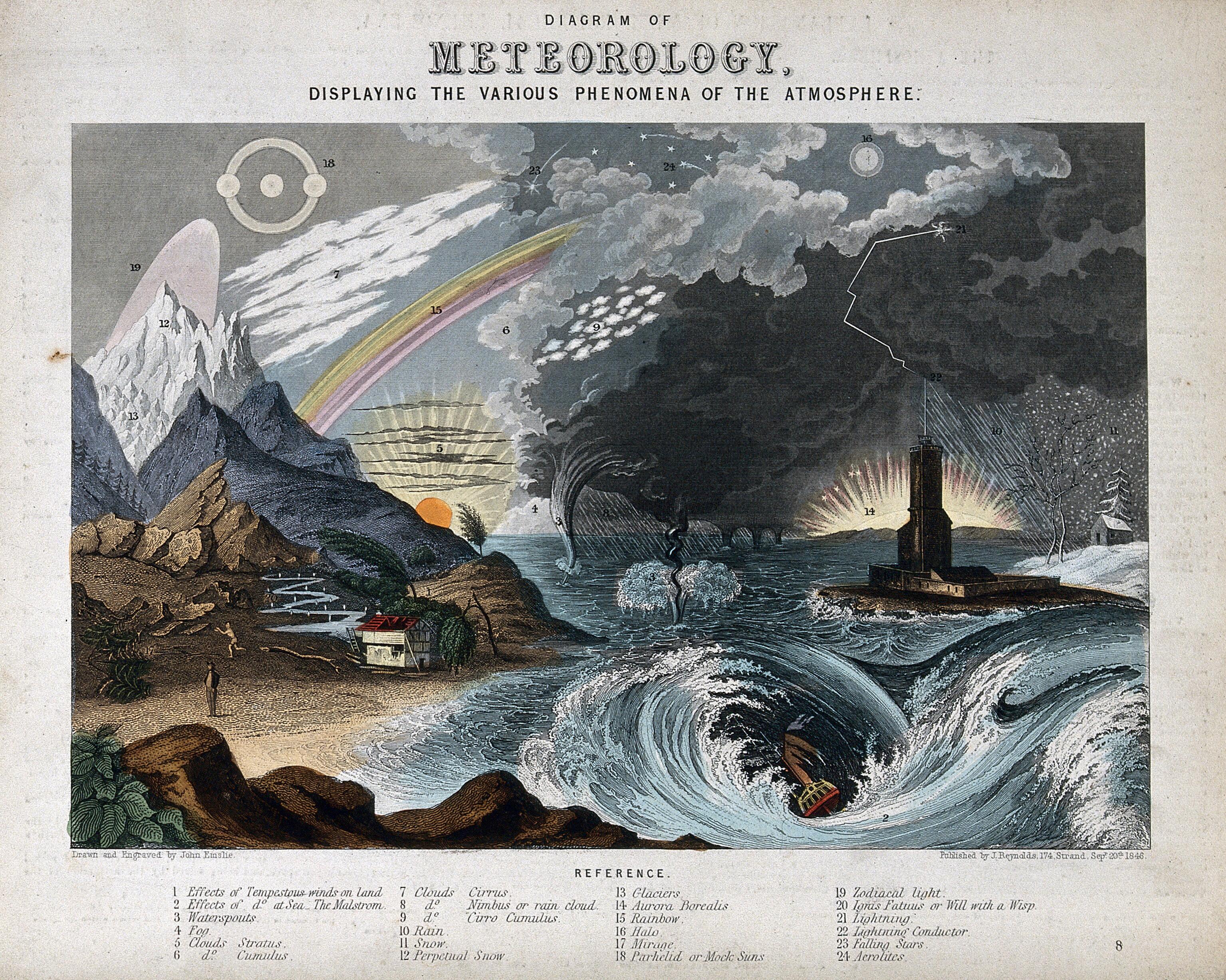

John Philipps Emslie, Diagrama de Meteorología, mostrando los múltiples fenómenos de la atmósfera, 1846
Life and death:
John Philipps Emslie, Diagram of Meteorology displaying the various phenomena of the atmosphere, 1846
December 6
Christina
December 7
Verónica
Acabo de leer este titular: “Rayos matan a 907 personas en India en 2022. Datos gubernamentales indican que este año, las tormentas eléctricas aumentaron más de cinco veces, hasta 240”. No lo explican muy bien (es una nota rápida de Aristegui Noticias) pero mencionan olas de calor y olas de rayos. No sería raro que estén relacionadas. ¡Olas de rayos!
I’ve just read this headline: “Lightning kills 907 in India in 2022. Government data show electric storms increased over five times to 240.” The report isn’t very clear (it’s a filler in Aristegui Noticias) but it mentions heatwaves and lightning waves. I’m not surprised there’s a relationship. Waves
of lightning!
December 8
Christina
“Waves of lightning” brings to mind such strange, marine images. I’m imagining the lightning surfing along the stormy beaches of the image you sent earlier!
“Olas de relámpagos” me trae a la mente imágenes marinas muy extrañas. ¡Me imagino a los relámpagos surfeando en las playas tormentosas de la imagen que enviaste antes!
December 9
Verónica
G me contó esto: “El convento franciscano de santa Bárbara en Puebla (luego denominado san Antonio de Padua) se edificó en el lugar donde un rayo demolió una cruz, y por eso el convento se dedicó a esa santa, porque Bárbara es la abogada contra los rayos, así como san José”. Santa Bárbara es la abogada contra los rayos y creo que tú y yo (y Víctor Frankenstein) somos las abogadas de los rayos.
Fuente: Miguel de Alcalá y Mendiola, Descripción en bosquejo de la imperial cesárea muy noble y muy leal ciudad de Puebla de los Ángeles, XVI, “Santa Bárbara”
G said: “The Franciscan convent of Santa Barbara in Puebla (later called San Antonio de Padua) was erected on the spot where lightning destroyed a cross, which is why the convent was dedicated to her; Barbara is the patron saint of those threatened by lightning—like Saint Joseph.” Barbara is the patron saint of those threatened by lightning, and I think you and I (and Victor Frankenstein) are the patron saints of lightning.Source: Miguel de Alcalá y Mendiola, Descripción en bosquejo de la imperial cesárea muy noble y muy leal ciudad de Puebla de los Ángeles, XVI, “Santa Bárbara”
December 10
Christina
Yes, I think we’re becoming like lightning rods.
Sí, creo que nos estamos convirtiendo en pararrayos.
December 13
Verónica
Esta es la primera fotografía occidental que existe de un rayo (según la Wikipedia). Parece que camina sobre los árboles y las montañas. Así nosotras, ojalá, en el futuro:
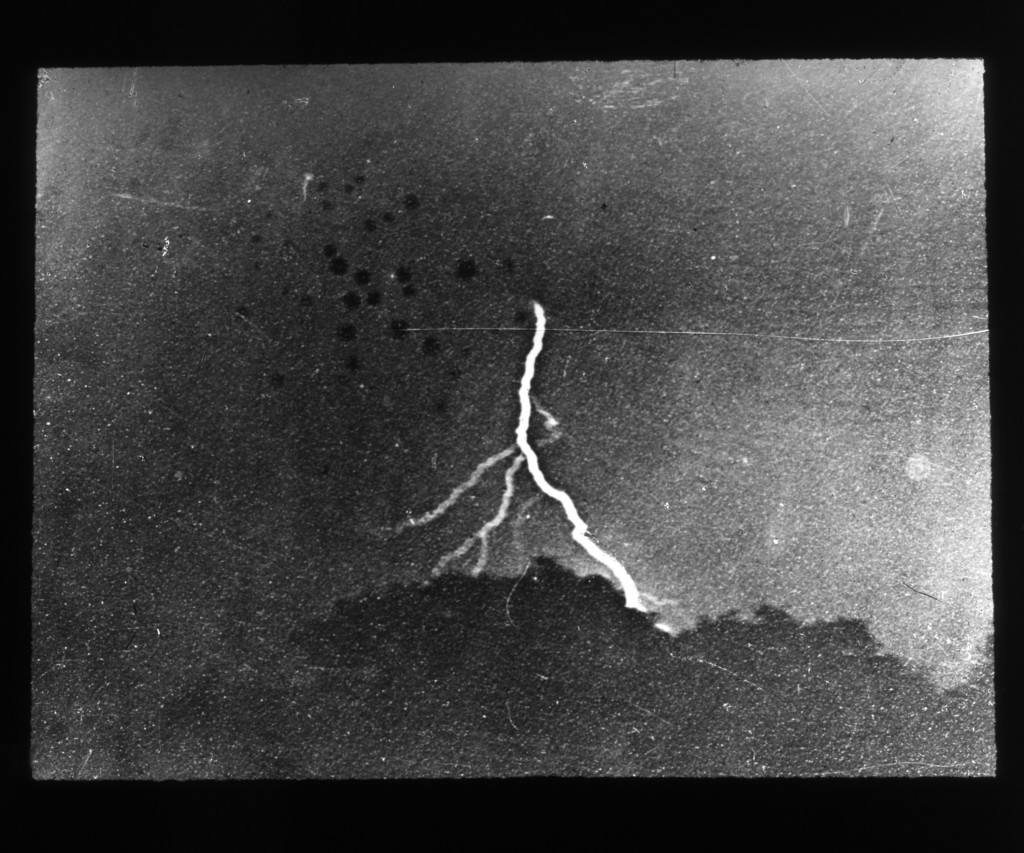
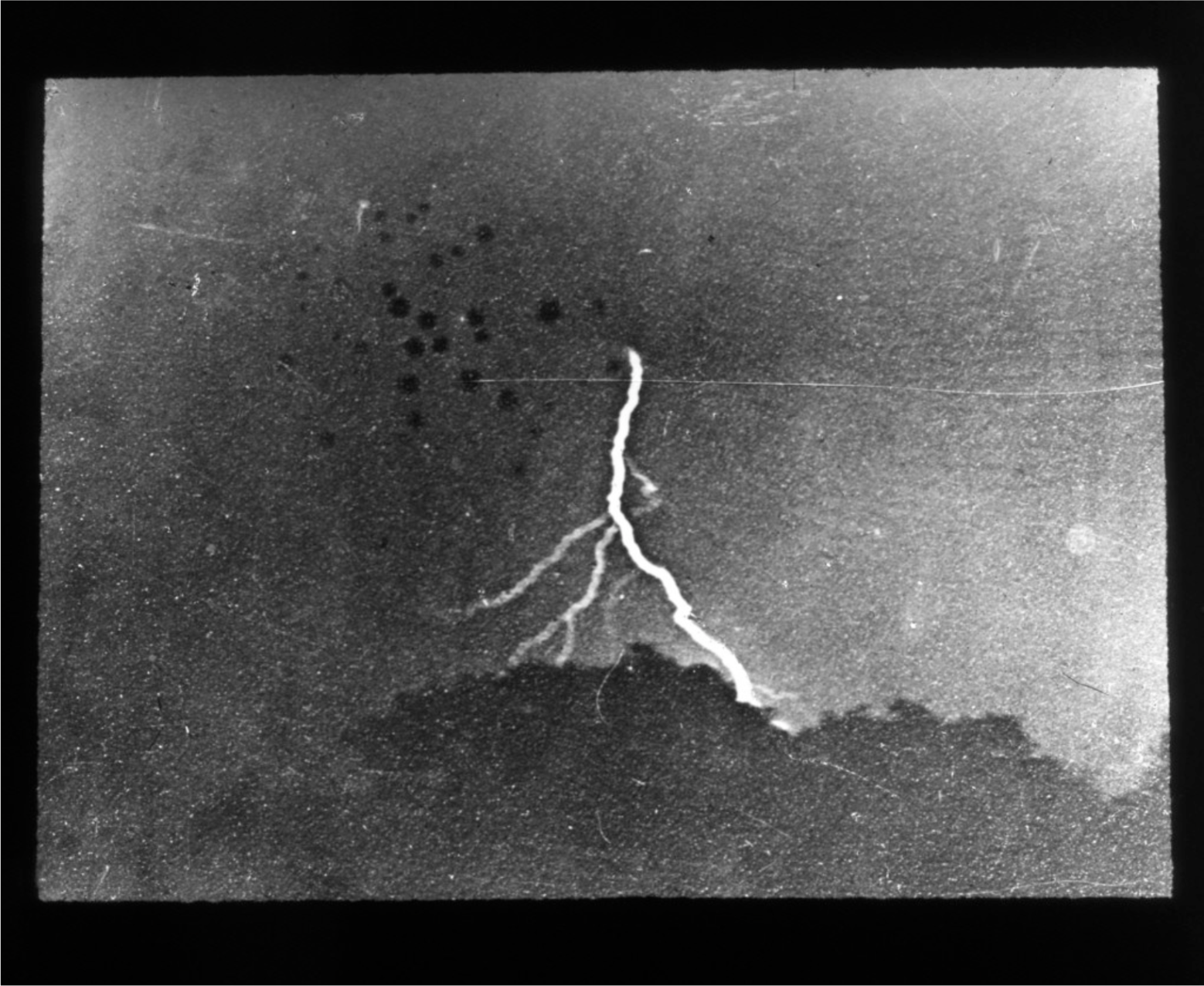

Primera fotografía de un relámpago, tomada del 2 de septiembre de 1882, William N. Jennings. Plata gelatina. The Franklin Institute, Philadelphia.
This (according to Wikipedia) is the earliest Western photograph of lightning still in existence. It looks like it’s walking over the trees and mountains. Hopefully we’ll be like that in the future:
First Photograph of Lightning, taken September 2, 1882, Philadelphia, William N. Jennings. Silver gelatin print. The Franklin Institute, Philadelphia.
December 14
Christina
So the trees are acting as lightning rods. The lightning travels to their roots, along the micelia… It’s like an internet of energy. I wonder if somewhere there’s a Lightningpedia where you can search all the messages that have been sent.
Entonces los árboles también actúan como pararrayos. Y los relámpagos viajan a sus raíces y luego a través del micelio… Es como un internet de energía. Me pregunto si en algún lugar hay una relampagopedia en la que se puedan buscar todos los mensajes que han sido enviados.
December 16
Verónica
Te dejo por aquí estos bellísimos versos de un poema de Aurelia Cortés Peyron que se llama “Palomilla”:
Relámpago.
Un árbol
se convirtió en puente.
Lightning.
A tree
became a bridge.
Relámpago.
Un árbol
se convirtió en puente.
Fuente: Xicotepec. Años roble, Aurelia Cortés Peyron, Ciudad de México, UAM, 2021.
I’ll just add these beautiful lines from a poem by Aurelia Cortés Peyron called “Moth”:Lightning.
A tree
became a bridge.
Source: Xicotepec. Años roble, Aurelia Cortés Peyron, Mexico City, UAM, 2021.
Verónica Gerber Bicecci es una artista visual que escribe. Su búsqueda artística —el cruce entre palabra e imagen— comenzó con la serie de dibujos Diagramas de silencio, un ejercicio de exhumación visual a partir de la puntuación de diversos poemas y el libro Mudanza (2010), una colección de ensayos sobre escritores que desertaron de la literatura convencional para convertirse en artistas visuales. Para conocer su trabajo visita: www.veronicagerberbicecci.net.
Verónica Gerber Bicecci is a visual artist who writes. Her artistic quest— the interface between the word and the image—began with the series of drawings Diagrams of Silence, an exercise in visual exhumation based on the punctuation of various poems and the book Mudanza (2010; Moving Out), a collection of essays about writers who deserted conventional literature to become visual artists. To find out more about her work, visit: www.veronicagerberbicecci.net.
Christina MacSweeney has an MA in Literary Translation from the University of East Anglia. Her work has been recognized in a number of important awards and her translation of Valeria Luiselli’s The Story of My Teeth was awarded the 2016 Valle Inclán Translation Prize and also shortlisted for the Dublin Literary Award (2017). Her most recent translations include fiction and nonfiction works by Verónica Gerber Bicecci, Daniel Saldaña París, Elvira Navarro, Julián Herbert, Jazmina Barrera, and Karla Suárez. She has also contributed to various anthologies of Latin American literature and published translations, articles and interviews on a variety of platforms.
Christina MacSweeney tiene una maestría en Traducción literaria de la University of East Anglia. Sus traducciones han sido reconocidas con varios premios importantes, por ejemplo, The Story of My Teeth, de Valeria Luiselli obtuvo el Premio de traducción Valle Inclán 2016 y fue finalista del Premio Literario Dublín en 2017. Sus traducciones más recientes incluyen narrativa, ensayo, cuento y géneros híbridos de autores como Verónica Gerber Bicecci, Daniel Saldaña París, Elvira Navarro, Julián Herbert, Jazmina Barrera y Karla Suárez. También ha colaborado en varias antologías de literatura latinoamericana y publicado traducciones, artículos y entrevistas en distintas plataformas.
1. Alvin Tran (with Wendy Xu & Katie)
2. Rhea Dillon
3. Fette Sans
4. Verónica Gerber Bicecci
5. Dawn Chan
6. Young-Hae Chang Heavy Industries
7. Quinn Latimer
8. Kosisochukwu Nnebe
9. Sheena Patel
10. Priya Jay
11. Caitlin Chaisson &
Denis Gutiérrez-Ogrinc
12. Miles Greenberg & Viðar Logi
CONTACT
INSTAGRAM

LOVE LETTERS IS A SERIES OF EPISTOLARY COMMISSIONS, RELEASED MONTHLY VIA EMAIL.
